Jul
15
Two tests and two papers down; one research paper and several despedidas (good-bye parties) to go before my flight on Sunday. I can’t believe how fast my time here is coming to an end (though for better or worse, this week has been dragging on and on, probably because I’ve spent essentially all of it shut away working on these assignments).
So, by way of study break, an abbreviated list of:
Things I will miss about Chile:
– My friends.
– Public transport. Granted, the existence of such a great metro system (plus buses) here is a necessary response to the problems of mobility that a city of five million people built long before cars were invented tends to face (as opposed to, say, Norman, where walking to a grocery store (at least from my apartment) is completely infeasible), but maybe this is just another way of saying that I really enjoy city life. I’ll miss my fifteen-minute walk to school and having a grocery store three blocks away and minimarkets on every corner and taking walks to the Moneda and generally not having to rely on cars at all.
– Fresh produce. The other day, I bought two kilos (that’s 4.4 pounds) of Gala apples for 500 pesos chilenos (that’s $.95) at the feria (the farmer’s market set up in the street two blocks away from my house every Thursday and Sunday). Last Sunday, I bought three kilos of mandarin oranges (excessive? definitely not) for 1000 pesos. How will I ever re-adjust to US prices?
– Speaking Spanish! You can’t speak Spanish in the US (well, as a white person) without coming off as a pretentious and obnoxious show-off; I’m really going to miss it.
– Seeing the snow-capped cordillera of the Andes from my balcony.
– The public parks and museums and centro of Santiago.
Things I won’t miss:
– The lack of Indian food in this city.
– Sharing the kitchen with sixty other people.
– The pollution.
– Doing assignments and reading dry history texts in Spanish.
– The lack of central heating at my residencia.
So, on balance? I don’t know. I don’t feel ready to come home at all!
Jul
9
So, a few weeks late (this blog is really great for productive procrastination, and with the end of the semester next week, I’m in high put-off-my-final-papers gear for the next few days): Bolivia me encantó. (lit. I loved it; also, it enchanted me.) The country treated us terribly; it’s a really difficult place to travel in, and not very hospitable to US citisens in general (luckily I was the only one in my group of friends, and was travelling with South Americans, which made things like border crossing a little easier), but nevertheless I loved it, and can’t wait to go back.
In fact, saying that Bolivia is a difficult country to travel in might be an understatement. Granted, before going we had heard horror stories from other friends and traveller acquaintances about Bolivian bus drivers (drunks) and highways (precarious, bumpy, and winding around cliffs without guardrails); I don’t doubt their stories, but I can attest that we didn’t run into any of those problems.
And although I didn’t see a single paved road (well, except in the touristy center of the town of Uyuni) until we got north of Oururo (about four hours south of La Paz), the gravel roads were in very good condition; even the ATV paths we took to get from northern Chile to Uyuni (about a nine-hour drive) were perfectly comfortable to drive on. (Though we did get a flat tire on the way.)
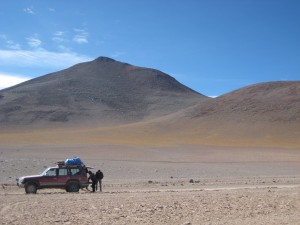
To me there was a very weird dynamic, actually, driving through southern Bolivia. In the midst of the empty countryside and strikingly impoverished little towns (groups of mud-brick buildings, really) and strikingly beautiful landscapes and waiting at llama crossings and more striking poverty (crumbling houses without roofs and solitary men out tending llamas in the middle of more completely empty land — 70% of the country’s population is rural, and the majority of people lack heating, electricity, and sometimes even running water) and so on,
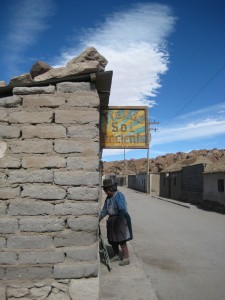
there were telephone lines everywhere, and the occasional industrial field with a foreign company on site and, oddly, road signs pointing us toward “pueblos auténticos” (“authentic towns”), a government-sponsored tourism project which had the paradoxical effect of suddenly making these pueblos seem very inauthentic (which I’m sure is not the case). (A quick internet search suggests that this guy designed the logo.) In other words, modernity and the state are staking their claims all over the countryside, but it hasn’t visibly affected the daily lives of the people (yet).
Anyway, I made the claim a few paragraphs ago that travel is difficult in Bolivia, and I should probably explain myself. Here’s the story: to save time and experience more of the country, we took an overnight bus from Uyuni to La Paz, about a nine-hour trip. We left at 9 pm. The bus came to a stop at 12 pm… and when we woke up the next morning, it still hadn’t moved. After an hour or so of continued confusion, the word slowly spread that we were in front of a bridge which had been taken over by striking peasants protesting something about land rights and waiting for the governor of the province to arrive to negotiate. They’d placed rocks all across the bridge to prevent traffic from passing.
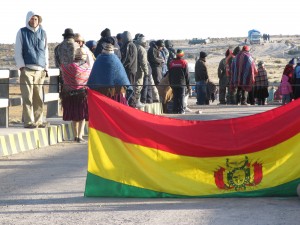
Long story short, after several more hours of waiting and getting all sorts of conflicting information (and translating for a group of British women who didn’t even have the advantage of speaking Spanish) and going to eat breakfast (galletas, a very useful word for anything small and cookie-shaped, be it cookie or cracker; a packet of Bolivian-made galletas generally cost one Boliviano — about fourteen cents), our group gave up and started walking. And walking.

And two hours and a few kilometers later, we reached the second paro (strike), where we found a very nice man who drove us to a nearby town (at that point, anywhere was fine); from that town, another driver very kindly took us to La Paz for about five dollars apiece. Twenty-seven hours later, our ordeal was over.
But here’s what I got out of this, besides the experience (adventure) of spending a night in what one friend termed the bus de pesadillas (bus of nightmares), and then that terrible trek across the empty countryside (word to the wise: packing fourteen kilos of clothes is almost certainly unnecessary if you have to carry it in a backpack): the state of Bolivia’s infrastructure is shocking. The reason we spent so long waiting and waiting and hoping that the negotiations would conclude, rather than just going around the bridge, is that there literally is no other road between Uyuni and La Paz. Go look it up on Google Maps (we were near Río Mulatos) — there is only one highway connecting that major tourist center (and essentially the only large town in southern Bolivia) and the de facto capital of the country.
Now, for everything else that made that week personal discomfort and long nights and entirely too many galletas completely worthwhile:
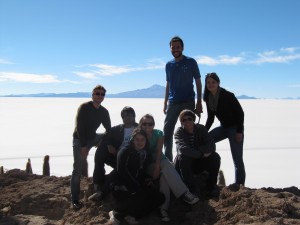
Isla Incahuasi, Salar de Uyuni -- in the middle of the largest salt-flats in the world, this "island" of rock emerges, inexplicably covered in enormous cacti.

Near the Hotel de Sal, in the middle of the salar.
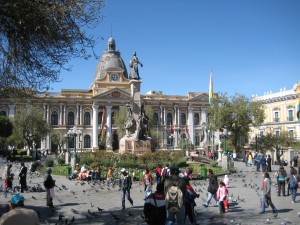
Plaza Murillo, La Paz
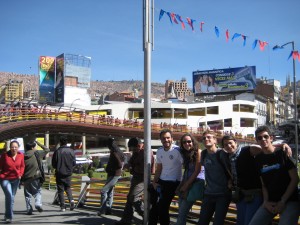
On our way to the Mercado de Hechicería (Witches' Market), La Paz.

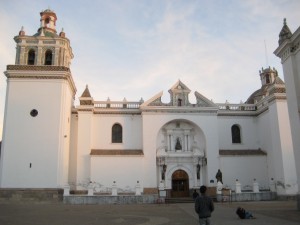
Iglesia de Copacabana, Copacabana (on the shores of Lake Titicaca) -- a major pilgrimage site during the colonial period

Inside the church -- that's all real silver and gold. (Photo credit: Murillo N.)
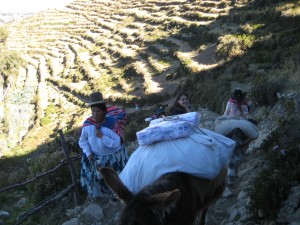
Isla del Sol, Lake Titicaca. Can you spot me?

The entire time we were in Bolivia, I was already thinking: “I can’t wait to come back. Five days isn’t remotely enough.”
Y, eso. I guess more than anything, I learned what it means to fall in love with a country on this trip. I like Chile a lot, and I really feel at home now in Santiago, but it didn’t knock me out at first sight. Bolivia, though, was incredible — I loved every part of it we saw.
And the most exciting thing about Bolivia is how full of possibilities it is (sorry for the cliché). Even after centuries of being strip-mined (the famous silver mine of Potosí is located a few hours away from Uyuni) and bled dry by Europe and the US, it’s still full of natural resources (gold, silver, copper, boron, magnetite, lithium, salt, and more) just waiting to be extracted; in such a poor country, this wealth of resources could be instrumental now in driving the country’s economic development.
Bolivia is also a deeply traditional country, especially outside of the cities, and more than 80% of the population claims indigenous identity; currently, Evo Morales, the country’s first indigenous president, is leading a push for political reform to better incorporate the Quechua, Aymara, Guaraní and some 33 other recognised indigenous groups into the, the state. A constitutional reform was passed in 2009 that changed the República de Bolivia into the Estado Plurinacional de Bolivia (and made more substantive and less cosmetic changes as well!), and Morales is now looking to reform the legal system to better protect indigenous rights. This program of political and social reform gets very little press in the US, but it’s one of the most interesting things going on in Latin America right now; Morales’ attempt to integrate such diverse cultures into the functioning of the state is the first of its kind, and his successes and failures in this program will have profound lessons for the rest of the continent.
(A few of my friends casually bumped into Evo as they were out picking up our laundry one evening in La Paz):
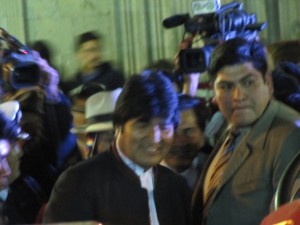
In other news, my flight home is on July 18; I can’t believe everything is coming to an end so quickly. I promise I’ll be back soon with more thoughts about Chile!
Jul
8
Since I hadn’t been able to upload photos until now, here they are. Looking back at them, I think they summarize the first three weeks of my trip well. That’s good for me because I haven’t had time to post as much as I wanted to on this blog. The Journey to Italy program is, by nature, go-go-go. I think if you choose to do a program that only lasts one month and then try to make free time for yourself, where you can sit inside and write a blog, you’re doing it wrong. There is way too much to see and learn for that.
So here I am, at home in Oklahoma, only now having the time to sit and think about my trip. I guess I might as well start with the photos.
This is something beautiful on the top of the Trevi fountain. One of the first nights that we were in Rome, most people in the group went to the fountain, a great people-watching spot. The fountain itself is gorgeous at night. The sounds of the water and people chatting keep the area buzzing with life. I threw one coin into the water, to guarantee that I would return to Italy someday. If I had thrown anymore, I would have risked falling in love with and marrying an Italian man, which is not part of my life-plan.
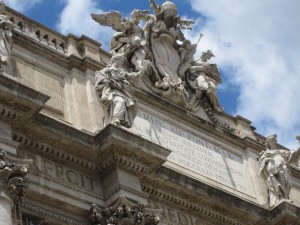
This is a view of Rome. I really loved exploring Rome. I guess I love Arezzo most, but Rome is a close second. It is a big city, full of people and food and art and history. There is no way to see it all. And no way to describe it perfectly. All over the city, there are fountains of fresh water to fill up your bottle. Since I am someone who won’t leave the house without water, I loved this. I bought three bottles of water on the trip back to Oklahoma because I kept having to go through airport security and am too neurotic to go without it. I couldn’t help but think about Rome.

This is the Arch of Titus. I learned about it when I took my first art history class. I always liked it and never knew why. Now I love it and I still don’t really know why. That may not be the most fascinating thing to read, but there is something to be said for loving art without having a reason. I do a lot of that. Sometimes I find a reason.Sometimes I don’t.

This is the Colosseum. And a topless man. I didn’t intend to take his photo, but it is an excellent representation of the way I experienced Italy. No, no, no, I’m not trying to say I spent time looking at ancient architecture and partially nude Italian men. The former -yes, the latter- not on your life. What I mean is that you can’t experience the beauty and history of Italy without also experiencing the culture of the Italians. Or, more accurately, you can but shouldn’t.
On the last day of class, my professor told us a story. She said she was standing in front of a big tourist spot, when a bus pulled up. Out of the bus comes a group of young Americans, looking worn out and like they’ve just been dragged all across the country. One girl turns to her friend and says “What city is this?” Her friend answers that she thinks they’re in Florence. Then the first girl says, in a completely sincere, awestruck voice, “Ah, Florence!” That would be .. oh.. almost ok if they hadn’t been standing in front of the Colosseum in Rome!
I got two things from this story. The first is that that’s no way to see a country. You should embrace the strangeness, get out of the tourist bubble, and try to learn about what you’re seeing. Attempt to order things in Italian. Failing is better than not trying. The second thing is that I am so glad my trip was not like that. If I had just wanted to see the famous art and buildings and then get back on my air-conditioned bus, I would have been completely out of luck. That is just not what this program is like.
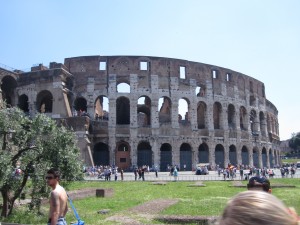
This is a photo I took of the floor of the Duomo in Siena. Not a whole lot more to it than that. Why don’t floors here ever look like that? Italy has beauty in spades.

On to Florence. This is the ceiling of the Baptistry.
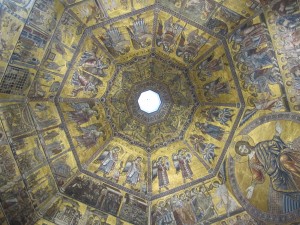
Will you just look at that? Those colors, water, little boats? This was in Burano, a tiny island off of Venice. No matter how many times I look at the photos from my trip, I still can’t believe how many beautiful things I got to see. It was amazement overload.
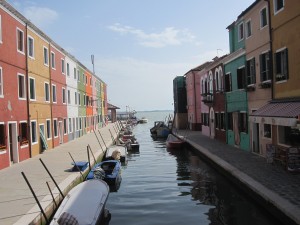
One day, we took a field trip to Michelangelo’s birthplace. It didn’t seem like that special of a place at first. There was a building. It was where he lived. And there was a small museum. I wasn’t enthralled until I saw the view. I have been in so many churches but I never felt so.. reverent as I did at Michelangelo’s birthplace. The nature that surrounded the house was so beautiful. The house was built up a steep trail, away from the town. It felt so peaceful and made me think. And take many pictures. Here is one.

This is a photo of my group, right before we went to our neighborhood dinner for the Joust of the Saracen. I had some definite team spirit, which is pretty unlike me.

This is my view of Piazza Grande from the stands right before the Joust, during some procession. Usually, it’s just a piazza. But that night there was a long packed dirt trail, many horses, and knights. There was more filler than actual jousting, but the filler was pretty impressive too. Who knew flag-throwing could be so masculine? Even in tights, those guys were a little sexy. A little.
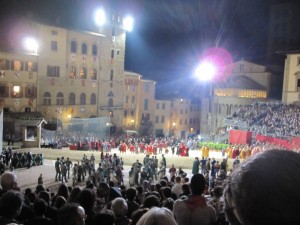
I took many pictures while in Cinque Terre. It was one of the most beautiful places I’ve ever been. The pictures I like the best are the ones I took to document my hike. I hiked! Really, I did! This is a picture of a trail I just conquered, on the way from Montorosso to Vernazza.
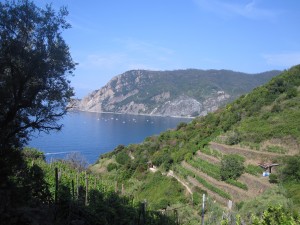
This is from the end of the hike. We made it to beautiful Vernazza. We were hot, sweaty, and in great spirits. See those rocks down there by the beach? That’s where I sat to soak my hot, aching feet for awhile before exploring the town. Perfectly cool, blue water. I even saw a crab, starfish, and a sea urchin.

The last field trip we took was to Cortona. For one of our classes, we read the book Under the Tuscan Sun. It was set and partially filmed in Cortona. Our first stop was a local vineyard, where we got to tour the Barrachi winery. I saw tiny grapes and barrels of wine. Then came the tasting. It was a long, relaxing, late-morning wine tasting. I wouldn’t suggest 11 am as a good time for a tasting, but it was excellent nonetheless. I am certain it was the best wine I’ve ever had and they were very generous with the servings. The winery is a small, family-run operation, so the son spoke to us about his wine. He told us how it was made and how to best enjoy it.
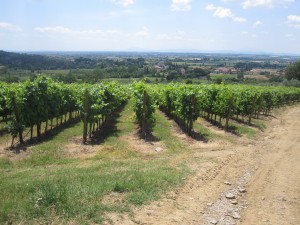
This last photo is a view of Cortona. It is so exactly what you’d imagine a Tuscan town to look like. I expected for the stereotyped ideas I had about Italy and Tuscany to be broken down, but they weren’t. They were reinforced. Fortunately, I had no negative stereotypes before going. I just thought Italy was all food, beauty, and culture. And it is. Of course, there are many other layers and definitely plenty that I did not discover.
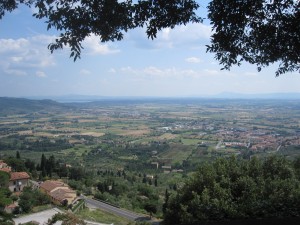
The lessons I learned while in Italy are still surfacing. For the most part, I had personal discoveries. That was a big goal for me in going abroad. I wanted to learn, but I also wanted to learn about myself in a foreign situation. And I did. I learned that I can fail and fail and fail at something and be embarrassed and be confused, but still be ok. I wanted to be strong and fearless, but I am not always. I can’t be. But there is one thing I can be: resilient. Call me a stupid American all you want, I’m going to keep trying. I learned many things about myself, including the fact that I will never get tired of pizza.
Ever.
And that’s it! I’m home now. As little as I’ve blogged, I still enjoyed sharing my experience. I’ll be the billionth person to say it, but studying abroad is worth every moment, every cent. Do it. It was only for a month, but it did something for me that I can’t explain. I came back with a new and improved perspective. I’ll leave you with a photo of my first attempt at baking focaccia bread at home:

Jul
6
I finished my last coursework at la Cato today just a few short hours ago. I guess it was actually my last course work of my undergraduate career. 🙂 I rewarded myself with some new reading and some sweets 🙂
After our oral exam, Calin and I ate lunch at “El Arbolito,” a yummy vegetarian restaurant near school. I had palta rellena and a fruit salad with yogurt. Delicious! Then, I went and dropped off some books at the library and turned in my 11 page final essay for Justicia. Before leaving campus, I stopped into the bookstore. Right when I walked in, I spotted some publications entitled, “Memoria: revista sobre cultura, democracia y derechos humanos” near the cash register. There were 7 volumes in total. I picked one up and thumbed through– it looked pretty interesting! But how was I supposed to choose which volume?!?!!? Well, I called my friend Emilio from Justicia class–I figured if anyone would know about these revistas (what I would consider an academic journal), it would be him! and sure enough! Emilio suggested volume no. 2! “Numero dos es bastante bueno!” I enjoyed having a phone conversation with a Peruvian without having to say “Qué?” o “Cómo?” even once! It made it even better that it was a great friend I’ve made while here. (I’m going to miss Emilio–I’ve seriously never met someone so genuinely kind-hearted! We plan on meeting up this weekend before I leave to say goodbye.) I started reading my newly purchased revista on the combi ride home. The first article is about a study conducted with people from four different locations in Peru about how they felt during the conflict. It is really really fascinating, and I’m so glad I purchased it because I’ve finished all my books and some borrowed ones!! Plus, it’s in Spanish, and it’s such a great feeling to be able to read-read Spanish now (without looking up things or translating back into English–seriously not translating back, I never thought the day would come!! 🙂 )
I’m sad my time here is winding down. I can’t BELIEVE I only have 5 more days left in Peru. Only 5 more days of being able to speak Spanish regularly, to look out on busy Lima, to ride dirty combis (said with love <3 ), and to visit with friends.
PS World Cup!!!!!!!!!!! finishes on the day we leave. We will have been lucky enough to experience the entire thing in fútbol-crazy Peru!
I've been so fortunate to have spent the past four months here. Lima will always hold a special place in my heart.
Jul
1
An attempt at describing my growth from the trip to Peru:
“Lost there; felt here” was a slogan from the presentation about the Amazon. We lost fresh air while in Lima, and we sometimes lose the feeling of peacefulness during our chaotic schedules in the United States, but I was at peace and close to nature in the Amazon.
I can’t put into words how I felt the past 25 days. Reading this blog can’t truly give readers the full experience, but I hope my writing and photographs inspired at least one person to experience Peru for himself or herself as I have experienced so much.
Peru has helped me push my physical limits and get back in shape. Although I played sports in high school, I haven’t made time to work out, but the Amazon reminded me how much I enjoy being active and opened my eyes to hiking, canoeing and embracing nature.
I am usually scared in the dark because the dark provokes my wild imagination to the unseen (especially animals in the rainforest), but I managed to shower in the dark (in cold water) in the Amazon every day–it’s amazing how fast I’ve learned to shower!
I’ve learned more about the indigenous of Peru. The indigenous here have difficulty preserving their languages and culture because there are so few of them who speak it. Plus, in order to get a job and make money, they must learn Spanish and often English, especially if they want to go into tourism or attend school.
I’ve learned that people from each region live differently, yet most of them simply want to make a living. The way of life in the Amazon is so different than the other regions of Lima and the United States. The people of the Amazon region go to bed after dinner or when the sun goes down while most people in Lima and Cuzco stay up really late. The jobs here are different and make less money. Yet there are problems (mining, mercury in water, etc.) here like there are in other regions.
As compared to people I have talked to in Lima, the people in the Amazon don’t want to talk about religion and politics.
Difference between Lima and Cuzco and Amazon…Caroline’s camera was stolen from her hotel room, yet nothing was stolen in the Amazon although we did not have doors or windows. We also left our phones to charge by the reception area, yet nothing was taken.
Lack of electricity was peaceful for me for the most part since it was nice not hearing a phone ring or seeing an e-mail pop up, but I can’t imagine how difficult it is for people without electricity. It’s hard for them to study and do other things at night, so they have to get everything done during the day.
My experiences have also provoked some questions. Feel free to comment on my questions or answer them according to your opinions.
How can the indigenous learn another language (such as Spanish and English) if they do not have the money or opportunity for education?
Environmental protection efforts vs. putting food on table.
How do miners feel about their jobs?
Their health is harmed by the way they make a living, yet what else could they do?
People of the jungle make up about 10 percent of Lima’s population. How can they get their voices heard in the city?
It’s fascinating how the indigenous have learned ways to adapt to the lack of hospitals and prescription medicines. It’s great how they’ve used things around them to help with their health and medical needs.
How many members of the jungle would be better off going to medical doctors and using prescription medicines?
How would they come up with the money and transportation?
How civilized are they if they still believe in love potions and spirits?
How much of the medical remedies are based on their religion?
Does this contradict the Catholic faith?
How many of the people in the jungle are Catholic?
How do they practice it without churches in the jungle?
You hear about corruption and you think a leader needs to step up, but how can he or she influence the people if most people won’t change how they make a living?
Jul
1
A review of Friday, June 25, 2010
Our flight from Lima to Houston, about 6 hours long, seemed fast to me. I sat next to an older woman and 18-year-old Peruvian man. I practiced Spanish with Peruvian native for the last time.
We had chicken ravioli for our meal and a muffin for our snack.
One hike, one boat ride, two bus rides, four flights, one car ride and 28 hours later…I am back home to THE OKC! Hello southern-fried food, washer and dryer, toilet paper, air conditioning, laws and ORGANIZATION! Thank you, Lord, for keeping us all safe!
I can’t believe I am back to the United States! I was so happy and proud when I saw the sign “Welcome to the United States of America” and when I heard “Welcome home.” The customs officer checked my passport picture several times and asked for another form of ID, which he continued to look over several times…sorry I look really good right now after traveling over 24 hours.
Our flight from Houston to THE OKC was at 7:35 a.m.; we got our luggage to take to customs at 7:35. So we missed our flight, but Continental took responsibility, waited for us by the luggage claim and booked us for the next flight! We had more time to bond and stay together before we all separated, but we will have our Perunion soon!
I took the longest, warmest and cleanest shower I have taken in 25 days when I got home! It was nice to wear my OU t-shirt, jean shorts and flip-flops and walk around in washed, wet hair instead of wearing long pants, long-sleeved shirts, 100 SPF sunscreen, bug spray and hiking boots and walking around with sweaty, wet hair.
I had my first meal in the United States with my mother and grandmother at Ann’s Chicken Fry House–fried green tomatoes, chicken fried steak, fries and cherry limeade!
I’ve slept 2 hours in the past 32 hours. I’ve been home for 5 hours and already have a to-do list. I decided to take it easy and spent the afternoon unpacking and doing laundry.
I somehow have over 30 bug bites/bruises/cuts/blisters from Peru…what have I been doing the past 25 days?
Jul
1
A review of Thursday, June 24, 2010
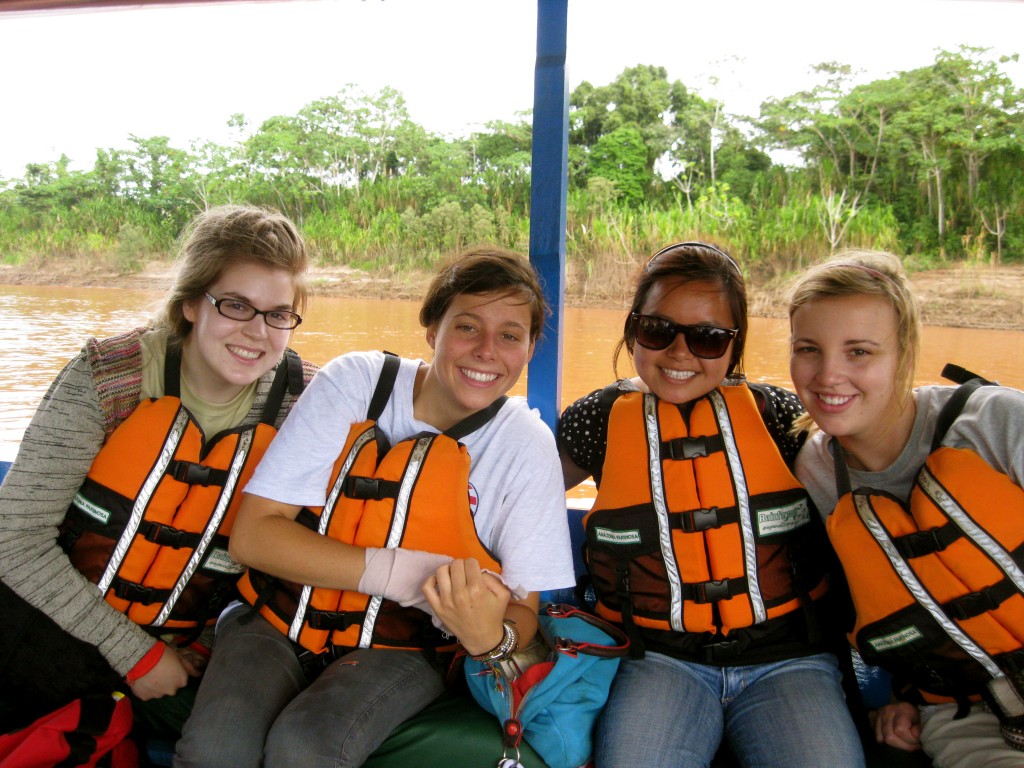
The boat ride was bittersweet and refreshing. For once, I didn’t sweat in the Amazon.
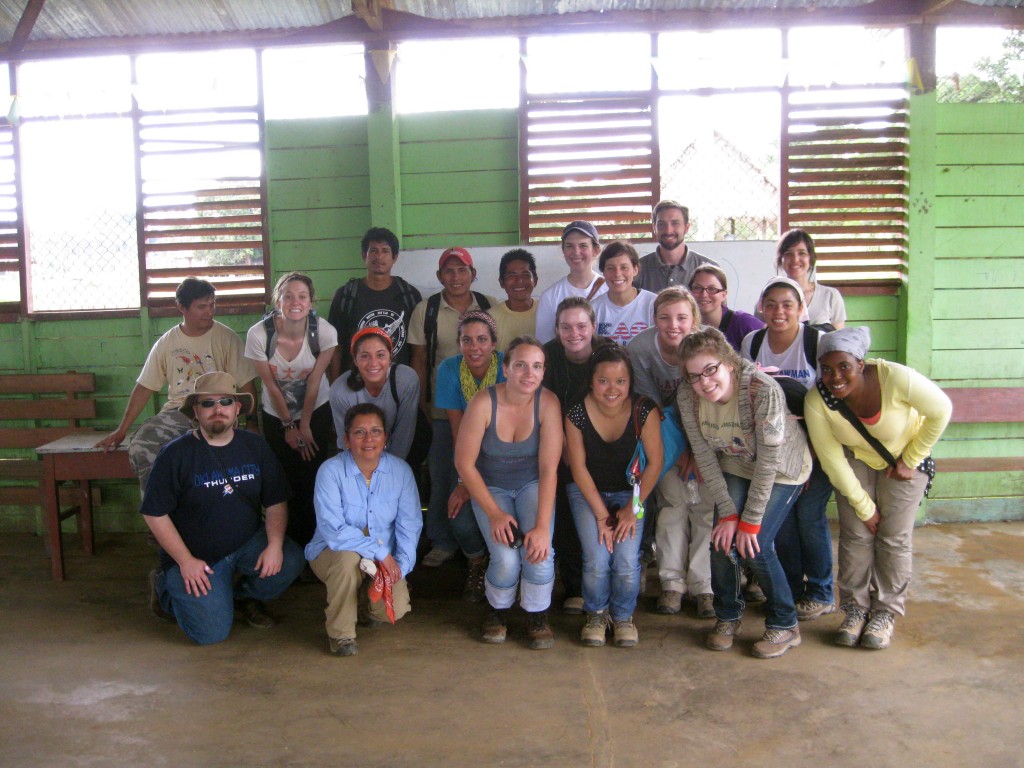
We rode the boat for about 2 hours to Infierno, a town along the Tambopatha River meaning "Hell" in Spanish. We rode a bus through the town. We also met Infierno’s president and visited the community center.
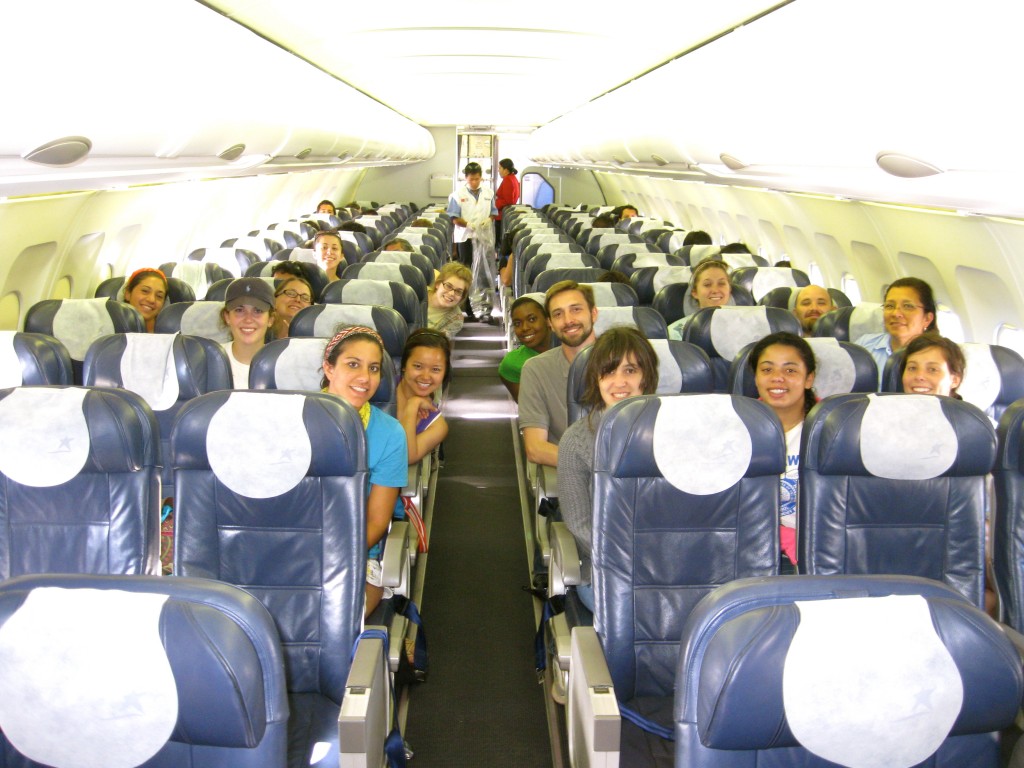
We flew to Cuzco and stayed on the plane because we were on the same plane for Lima. The plane was nearly empty; I’d like to think the plane was reserved for us because we’re just that special.

Our layover for the Houston flight in the Lima airport felt surprisingly quick. Here we are taking a last group picture.
Today is our last day in Peru. It is also Inti Raymi, the Festival of the Sun. Dr. Kenney said he planned for us to leave on this day because flights are less expensive.
We woke up at 5:40 a.m., ate our last Peruvian breakfast and hiked to the boat dock. The boat ride was bittersweet and refreshing. For once, I didn’t sweat while in the Amazon.
We rode the boat for about 2 hours to Infierno, a town along the Tambopatha River meaning “Hell” in Spanish. We rode a bus through the town. We also met Infierno’s president and visited the community center and arts center where I bought a wooden Puerto Maldonado keychain and coin purse made of coconut shell by a native man.
Next, we rode a bus to the lodge office to get our luggage. We sorted through our luggage, and I changed into shorts and had Inca Kola in Peru one last time.
The bus took us to the Amazon airport where we watched the World Cup while waiting for our flight. Caroline and I bought meat empanadas and ice cream. The sign at the front of the concession stand displayed a MasterCard sign, so Caroline tried to pay with her MasterCard, but the cashier said they only accept cash. Why didn’t someone take the sign down?
Based on my experiences in retail, this would be considered false advertisement since Caroline and I went to the concession only because we saw the sign and thought they accept MasterCard. We tried to pay with dollars, but the cashier said she would only accept soles. Where was the sign for that?
Because neither of us had soles, we ran to the other end of the airport to borrow soles from other students. Jane had only a 50-sole bill, and she loaned it to us. The cashier didn’t want to take such a big bill, but I told her it was our only way to pay. She then took it and left to find change. After minutes later, we received our change back and ate our food.
We flew to Cuzco and stayed on the plane because we were on the same plane for Lima. The plane was nearly empty; I’d like to think the plane was reserved for us because we’re just that special. I had a great time on the plane visiting with Courtney and Lori and laughing at the show “Gags.”
Our layover for the Houston flight in the Lima airport felt surprisingly quick. We arrived at the Lima airport around 5:30 p.m., and our check-in line didn’t open until about 8:30 p.m. We didn’t want to bring the group’s luggage upstairs to the food court, so Carlee and I went to the food court to see what we should do. We found an empty table so I told Carlee to go back downstairs and send a few people up to eat, then we could rotate.
As I approached the table to “colonize” it, a Peruvian couple also had the same plan. We awkwardly stood face-to-face:
“Are you wanting this table?” the couple asked.
“Yes.” I replied.
“Will you need all six of these chairs?” the couple asked looking frustrated.
“Yes; there’s about 16 of us.” I replied looking frustrated back.
“That’s about how many we have, too…” the woman answered.
Awkward silence…
“I guess we will find somewhere else.” The woman said and walked away with her husband.
I felt as if I just won a battle. Until I saw a lady walk up to my newly-claimed land and took a chair from me. That’s when I decided to sit down and put my feet on two other chairs. I didn’t care that I looked funny in the middle of the food court with five chairs and three tables. I had to save this area for my traveling buddies
About 15 minutes, Carlee came back and told me the group couldn’t decide what they wanted to do, so no one wanted to come eat upstairs right now. I was forced to abandon the new colony after so much effort. At least I know I could colonize a food court area on my own, right?
Carlee and I went back downstairs, and we all hugged Dr. Kenney and his wife because they were staying in Lima and vacationing with family. I felt like a baby sea turtle challenged to take on the Peruvian seas with my sea turtle siblings.
We took turns going upstairs to eat. I had Chifa (Peruvian-Chinese food) for the last time. We walked around looking at shops, paid our airport fee of $31 and hung out before we all separated. Although most of us were ready to return to the United States, we knew we’d miss Peru.
Jul
1
A review of Wednesday, June 23, 2010
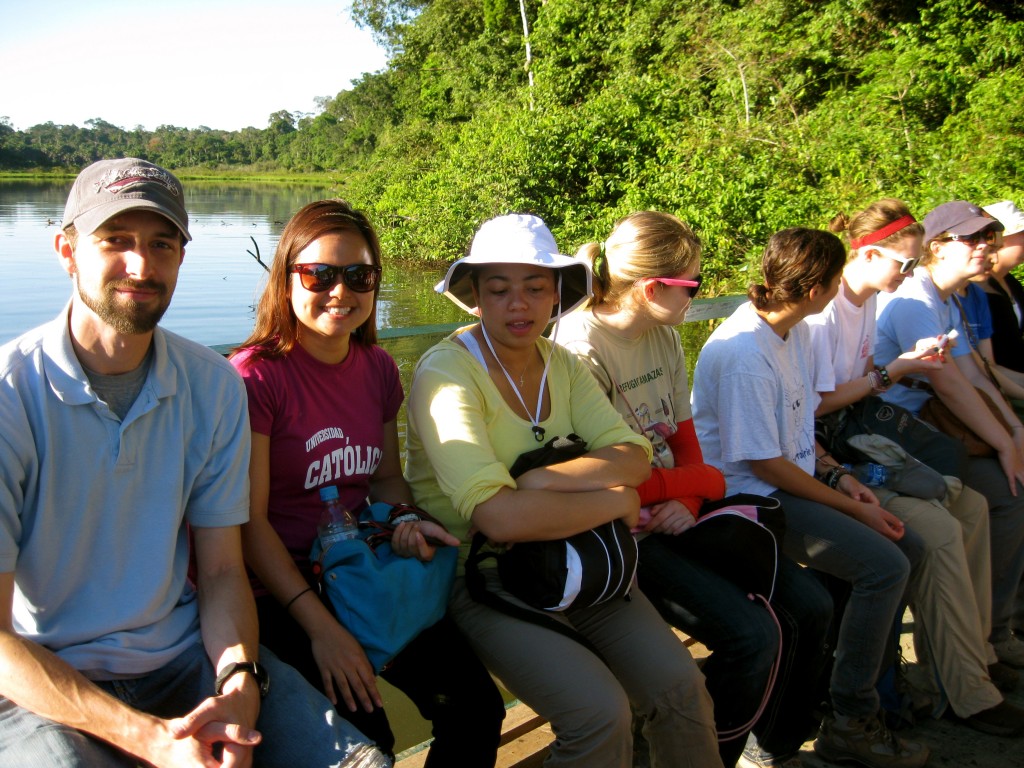
We hiked to a pontoon in a lake and fed fish and piranhas.
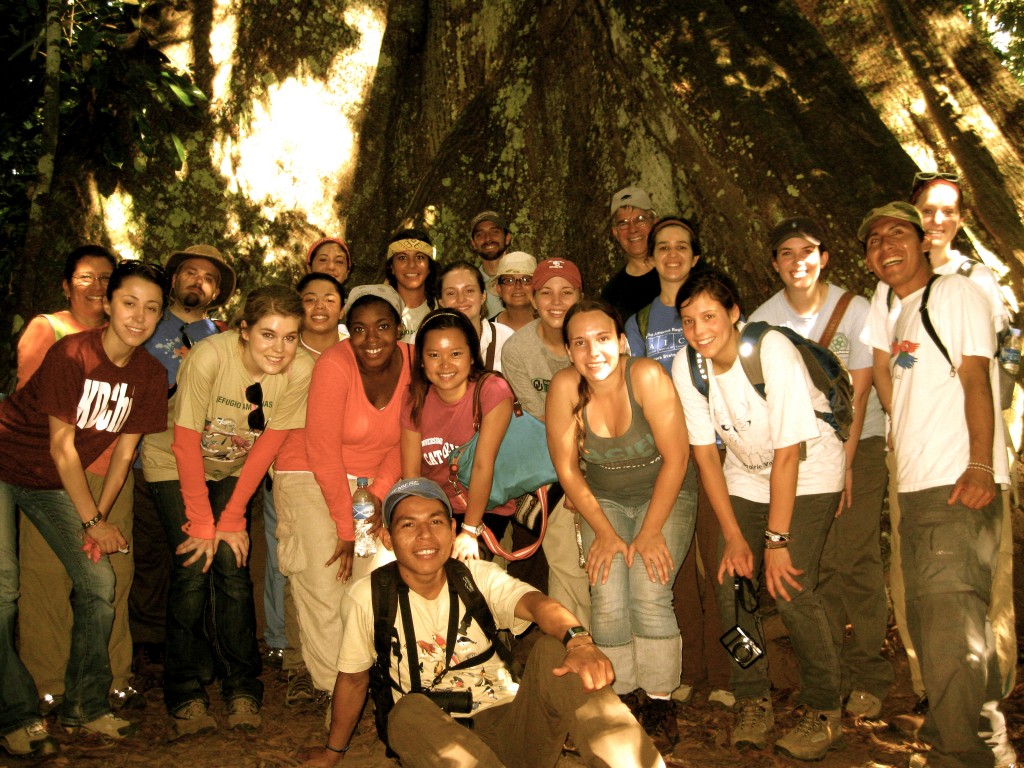
Then, we hiked to the two biggest trees in the world--the big tree in Avatar is based on these trees. Our group didn't even cover the tree's width.
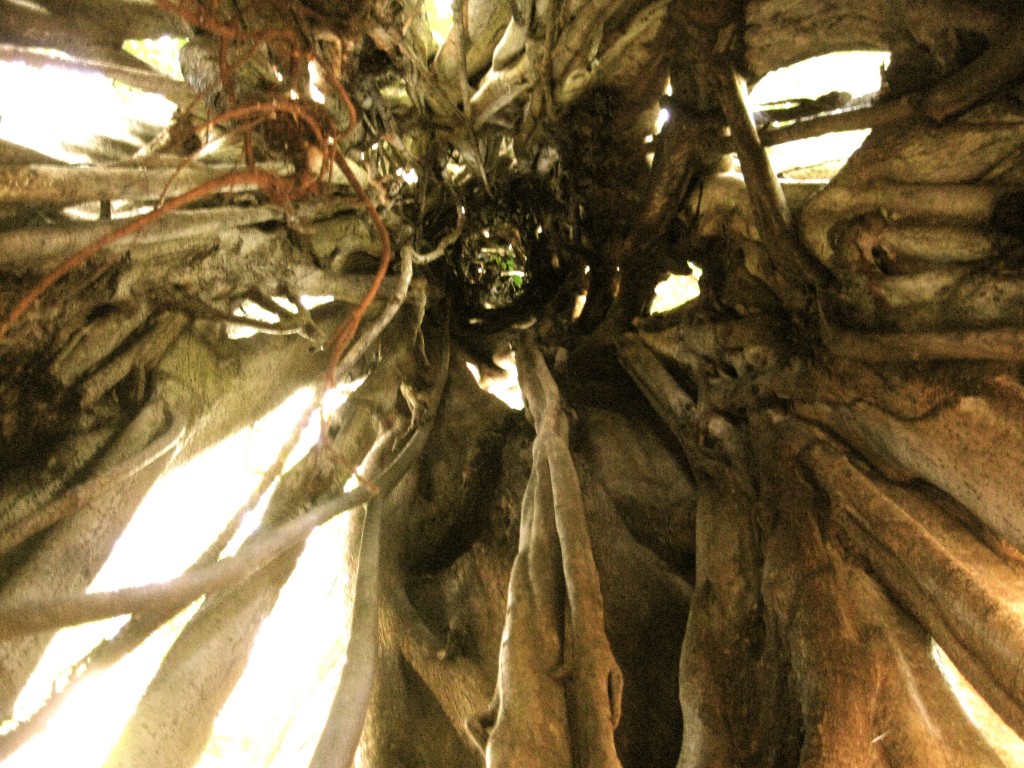
We saw the inside of the strangling tree--so cool!
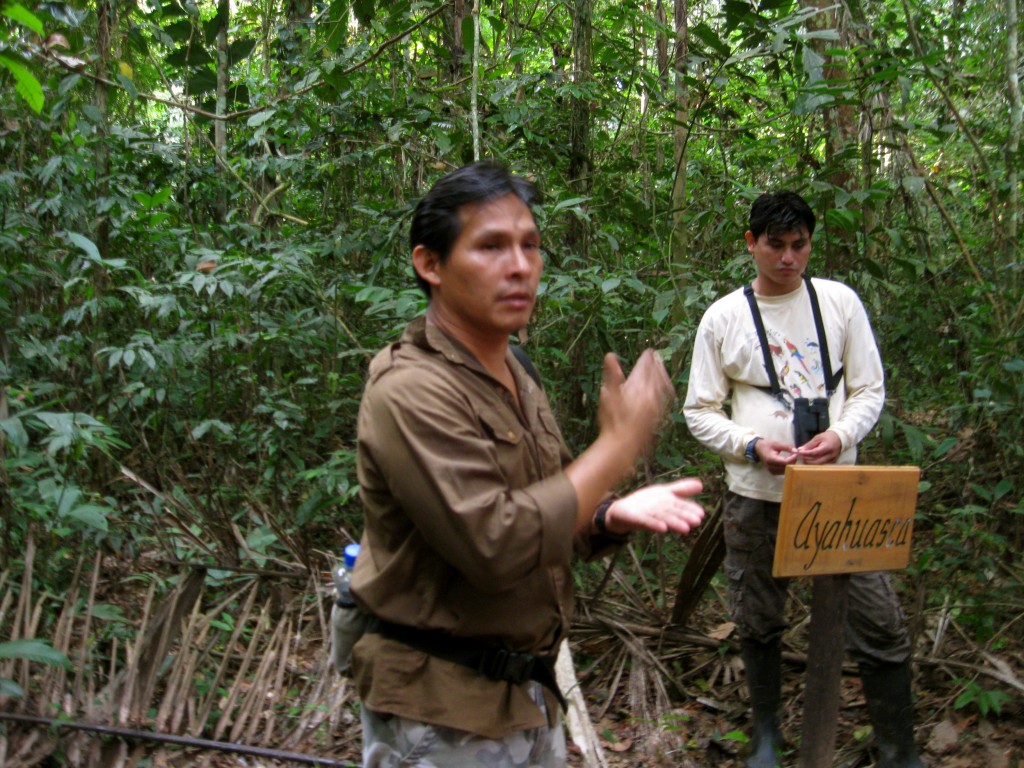
We hiked the Medicine Trail and learned about different plants used for medicinal purposes such as numbing, fever, love potions and many others.

We spent time at the overlook watching the sunset.
We slept in until 5:45 a.m. when our alarm clocks, our tour guides, woke us up with “Good morning” by our bamboo wall. It’s amazing how anytime after 4:30 a.m. was considered “sleeping in” to us. We hiked to a pontoon in a lake and fed fish and piranhas.
Then, we hiked to the two biggest trees in the world–the big tree in Avatar is based on these trees. I climbed one of them, but didn’t get far up. Andy climbed those trees like he was born to be a monkey. We saw the inside of the strangling tree–so cool!
We heard monkeys on the way back from the hike. One of our tour guides, Oscar, knows how to imitate the sound of many animals and birds. He interacted with a monkey using his talent. We heard the monkey, but it never came close to us. It’s awesome how much these tour guides know about the Amazon and its inhabitants. One of the tour guides’ shirts had the slogan, “Nature is our passion, sharing it is our commitment.” I have seen the passion, and the guides have remained committed to their promise!
We hiked the Medicine Trail and learned about different plants used for medicinal purposes such as numbing, fever, love potions and many others. We spent time at the overlook watching the sunset. I can’t believe it’s our last night in the Amazon!
We had class before lunch discussing the important things we’ve learned about the Amazon and before dinner discussing an overview of Peruvian culture and history. I never thought I’d learn this much about a country (besides the United States) and myself from one class and traveling for 25 days!
We have breaks between hiking and meals, but my body doesn’t know how to nap, especially in this hot and humid weather without a fan or air conditioning, so I usually write in my journal or hang out and look at our surroundings. It’s funny how often I wash my face here because I’m constantly drenched in sweat.
Jul
1
A review of Tuesday, June 22, 2010

We woke up at 4 a.m. today to hike to the boat dock, then rode to a trail that led us to a clay lick (dry layer of mineral deposits) for a 4-hour birdwatch.
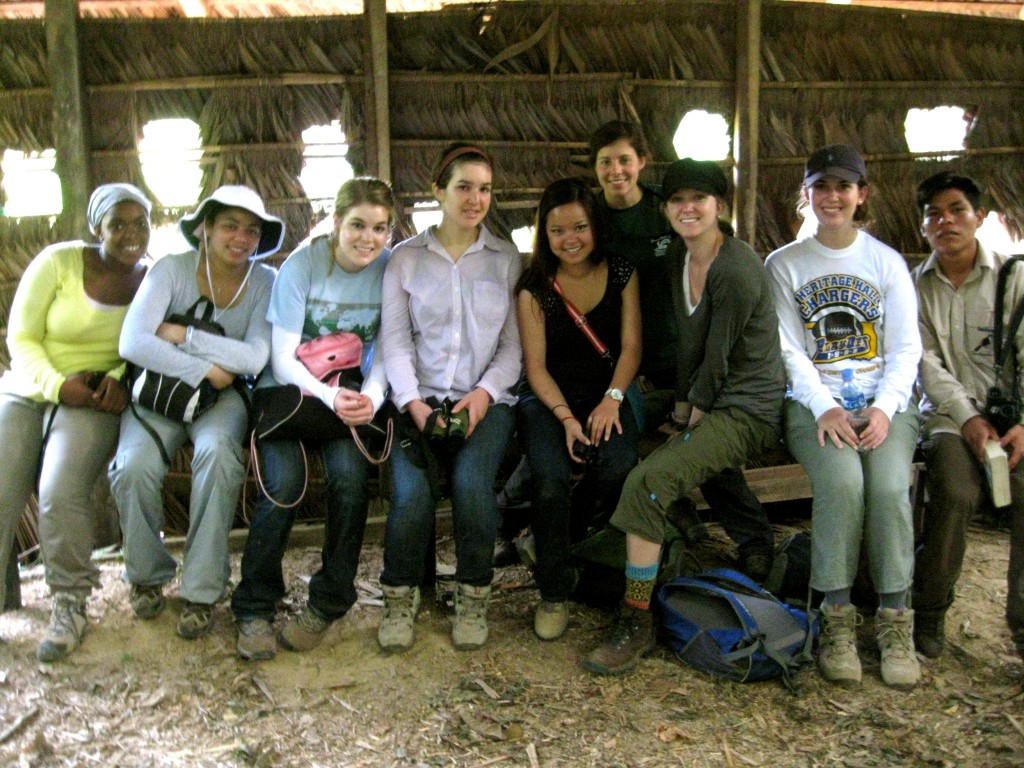
We split up into two groups. Both groups looked at birds behind a wall made of leaves. We hid behind this wall and look from a hole. The birds do not know there are people around, so they are not afraid and act natural.
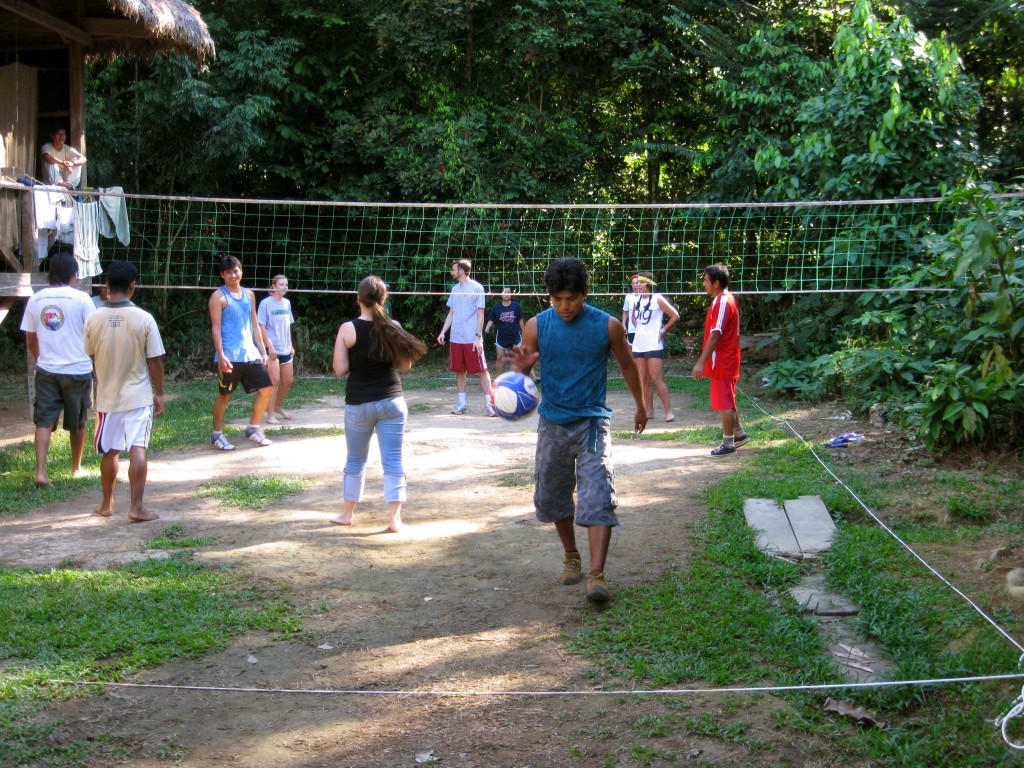
Then, we played team USA (5 OU women & 1 man) vs. Peru (6 Refugio Amazonas staff) volleyball in the blazing heat. USA won four games in a row in flip-flops and barefoot. People here are so fun and nice!
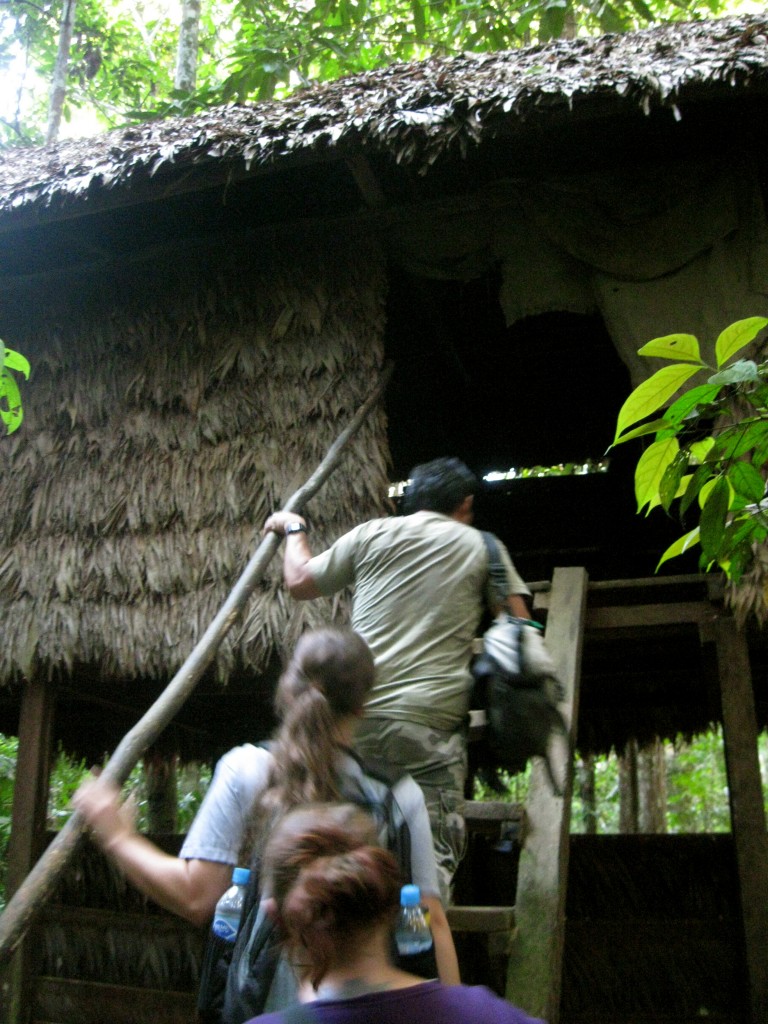
We hiked to the mammal clay lick, but it's difficult to keep two professors, 17 college students and 4 tour guides quiet, so we didn't see any jaguars or monkeys.
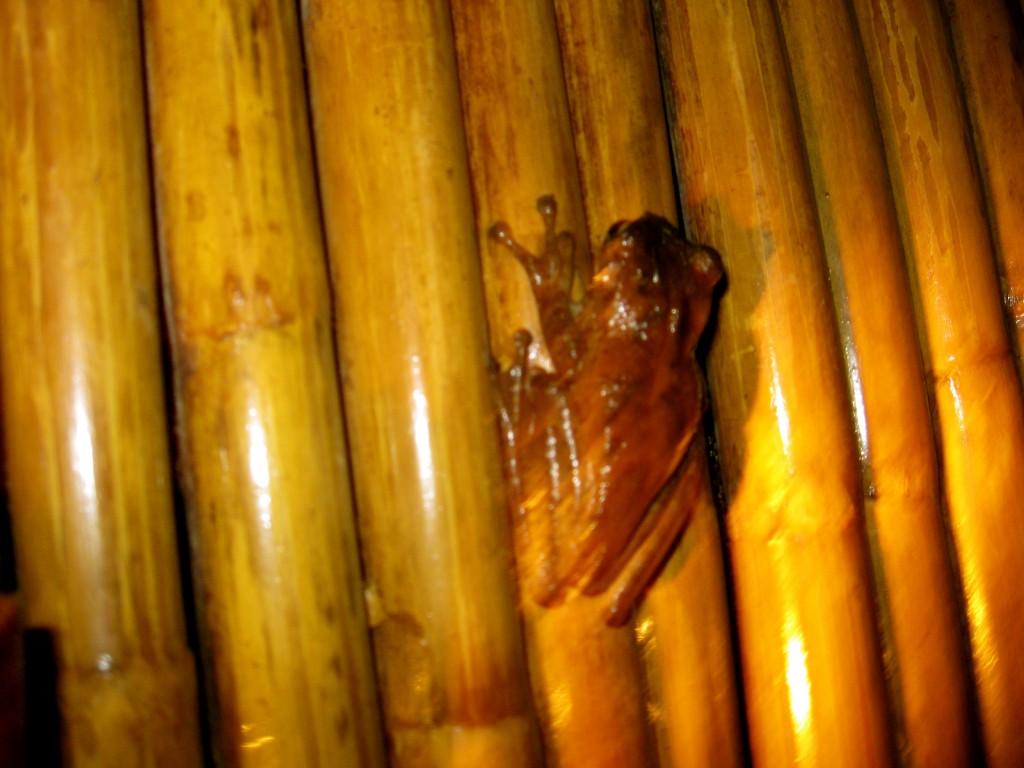
Frogs have been visiting some of us. Lori found a frog on her bathroom wall while Courtney had a frog hop up her leg while she was brushing her teeth.
I learned to adapt to our new environment and slept through the natural sounds. Ryan said he heard me snoring through our bamboo walls. At least he knew I was sleeping!
We woke up at 4 a.m. today to hike to the boat dock, then rode to a trail that led us to a clay lick (dry layer of mineral deposits) for a 4-hour birdwatch. We hiked for 1.5 hours there and back through vines, over tree stumps and under fallen trees–I saw the biggest tree I’ve ever seen, and it’s still living! It’s amazing how much goes on before the sun comes up, but I don’t mind because the temperature is so much cooler!
We had lomo saltado, rice, chick peas and mango pudding for lunch.
Then, we played team USA (5 OU women & 1 man) vs. Peru (6 Refugio Amazonas staff) volleyball in the blazing heat. USA won four games in a row in flip-flops and barefoot. People here are so fun and nice!
We hiked to the mammal clay lick, but it’s difficult to keep two professors, 17 college students and 4 tour guides quiet, so we didn’t see any jaguars or monkeys. Our tour guide made a baby tarantula come out of its nest, so it’s the same thing, right?
Since there’s no electricity, there’s not much to do at night except go to the lodge’s built-in bar (they know how to make money) and play board games. I decided to be with friends–yes, I played Mancala in a bar in the Amazon while sippin’ on water and eating kettle corn.
For class, we watched a presentation about the Amazon and its inhabitants presented by the staff of Refugio Amazonas. We learned about the endangered species and what officials and organizations are doing to protect the Amazon.
Frogs have been visiting some of us. Lori found a frog on her bathroom wall while Courtney had a frog hop up her leg while she was brushing her teeth. Ryan found a bug (that looked like a cockroach) the size of my hand, but the tour guide said it’s not a cockroach and that it eats wood.
Jul
1
A review of Monday, June 21, 2010
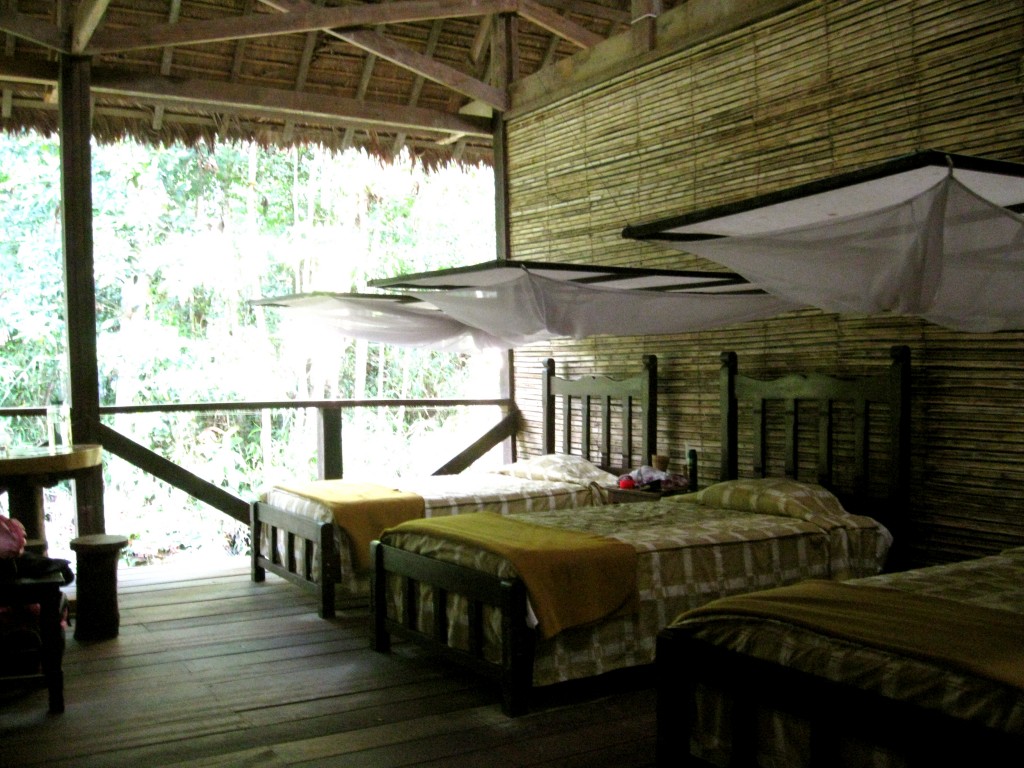
Our rooms at the Refugio Amazonas lodges. The fourth wall to our room is a giant open wall, which made me scared animals would come in at night, but we never had any cuddling with us.
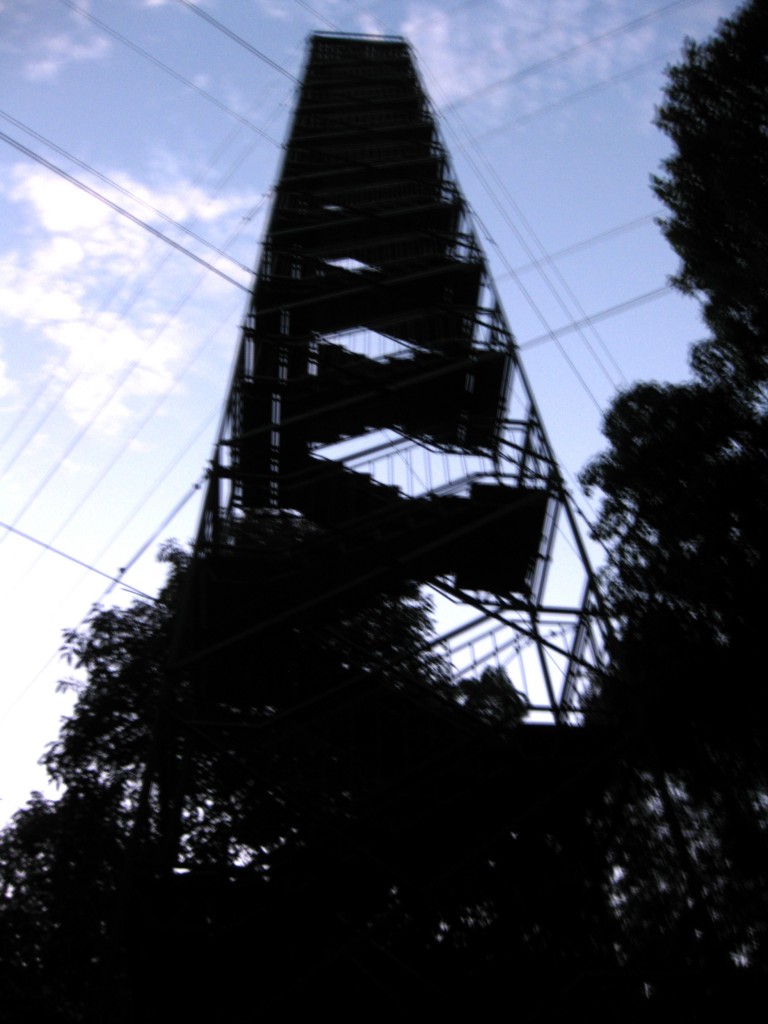
We woke up at 4:30 a.m. to hike to a 30-meter canopy where we saw guans, parrots, toucans and butterflies for about 2 hours. The sunrise was beautiful!

We wore helmets and hiked 1.5 hours through the Castana (Brazilian nuts, some of the largest and tallest trees in the Amazon) Trail and saw mammal tracks and uprooted trees.
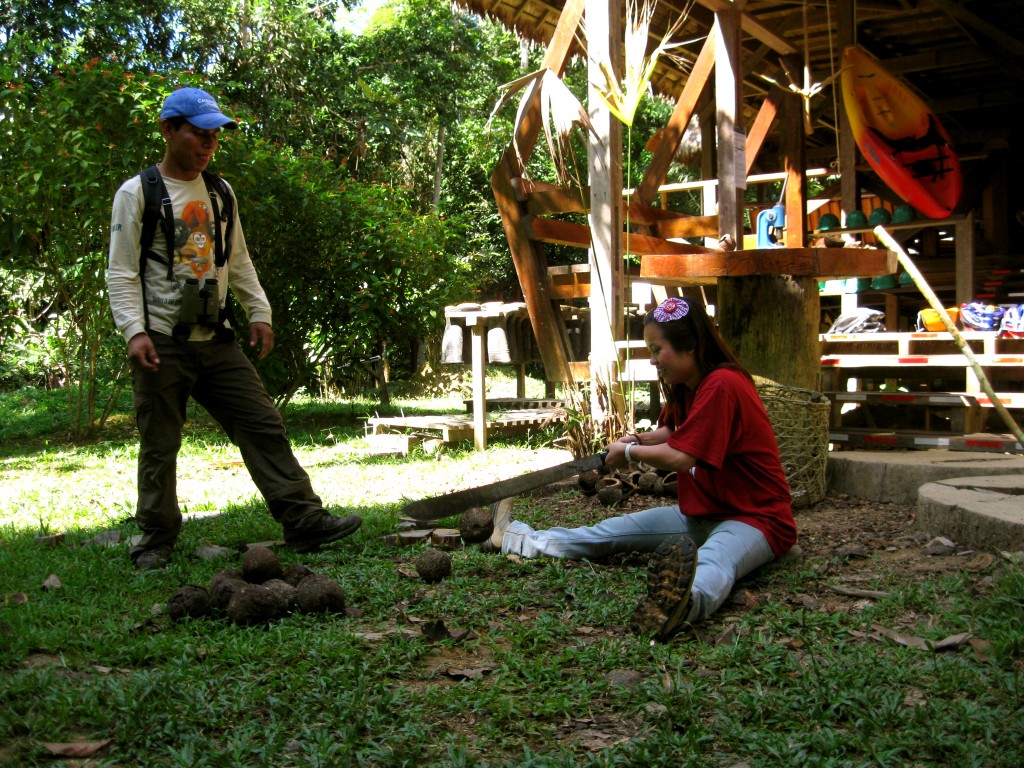
Then, we cracked open castana shells (look like coconut shells) with machete knives to get to the Brazilian nuts. It took me the longest time, but the reward was good because I felt accomplished, and they were very tasty!

I wrote in my journal in a hammock this afternoon.
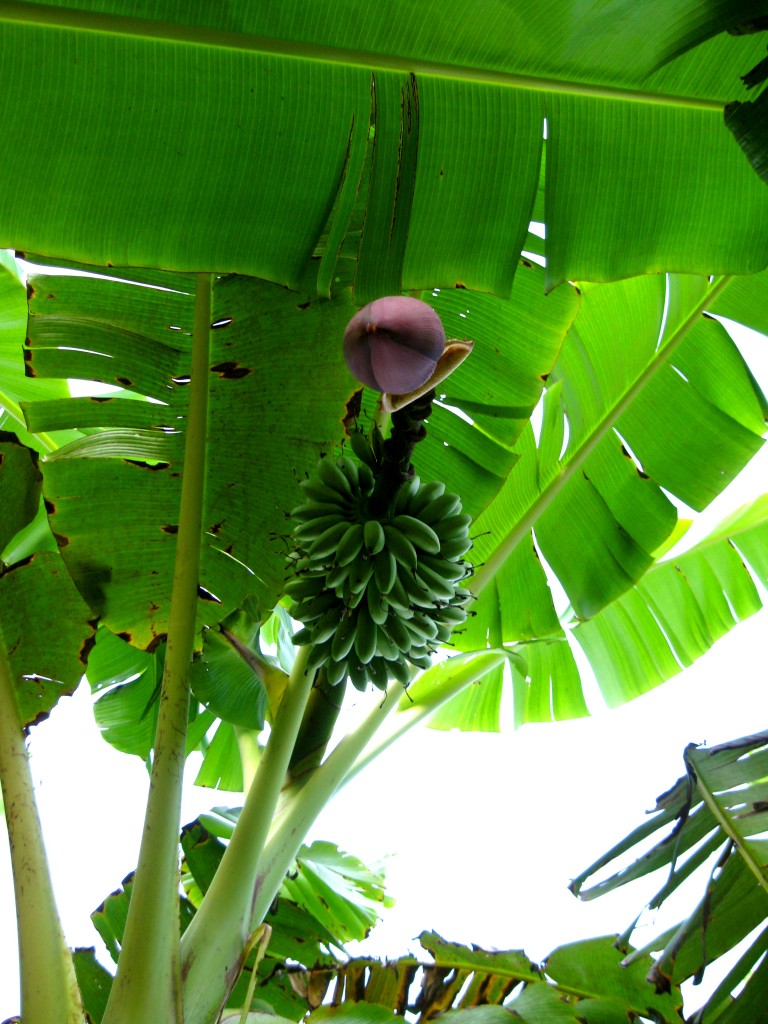
We visited a farm along the Tambopatha River across from our lodge in the Amazon. We tasted fruits and vegetables native to Peru and others that are in Vietnam like coconut, sugar cane, starfruit, ladyfinger banana, ginger and others. This farm has five different types of bananas.
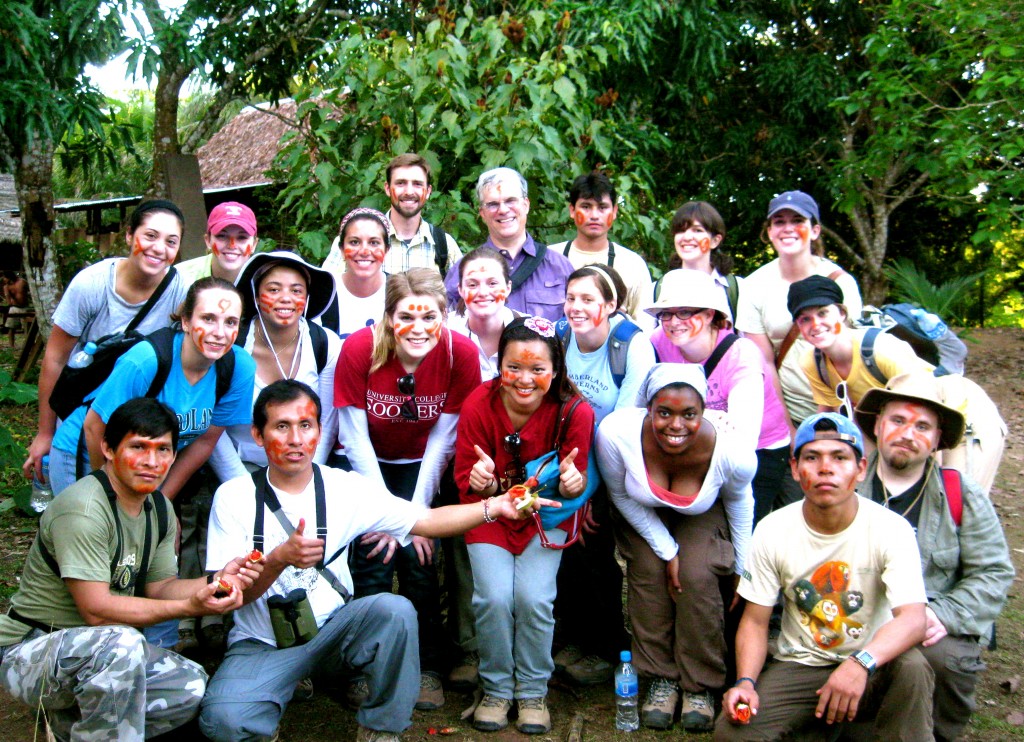
Then, we had a facepaint party with a natural dye from seeds. I painted OU on the tour guides' faces! Boomer Sooner from the Amazon!

We had class in the upper-level of our lodge in the Amazon until we were distracted by a giant preying mantis, the size of my Hello Kitty iPhone--it was so cute...we played with it and it crawled on my head!
We woke up at 4:30 a.m. to hike to 30-meter canopy where we saw guans, parrots, toucans and butterflies for about 2 hours. The sunrise was beautiful!
Because there’s no electricity or phones, our alarms and wake-up calls consist of Peruvian workers saying “Good morning” by our door (which is a curtain) and we must say “Good morning” back to let them know we heard them.
After our 5 a.m. bird watch, we had scrambled eggs, papaya and melon, granola, hot chocolate and biscuits for breakfast. Then, we wore helmets and hiked 1.5 hours through the Castana (Brazilian nuts, some of the largest and tallest trees in the Amazon) Trail and saw mammal tracks and uprooted trees.
Then, we cracked open castana shells (look like coconut shells) with machete knives to get to the Brazilian nuts. It took me the longest time, but the reward was good because I felt accomplished, and they were very tasty!
I don’t understand how workers have the energy to crack open over 150 lbs of shells for about $7 a day. But then again, do they have any other options?
I wrote in my journal in a hammock this afternoon.
We had chicken and rice, potatoes and watermelon for lunch.
It’s so hot and humid here; I gave in and wore shorts and flip-flops around the lodge while covered in bug spray in hopes bugs won’t bite me. I got a few bites, but it was almost worth it compared to how hot I was in long pants.
We visited a farm along the Tambopatha River across from our lodge in the Amazon. We tasted fruits and vegetables native to Peru and others that are in Vietnam like cocona, sugar cane, starfruit, ladyfinger banana, ginger and others. This farm has five different types of bananas.
Then, we had a facepaint party with a natural dye from seeds. I painted OU on the tour guides’ faces! Boomer Sooner from the Amazon!
We had pork chops and rice, cream of leek soup, steamed vegetables and banana cake for dinner last night.
Then, we discussed the ways it means to be “indigenous” and its importance in society, particularly in Peru. We had class in the upper-level of our lodge in the Amazon until we were distracted by a giant preying mantis, the size of my Hello Kitty iPhone–it was so cute…we played with it and it crawled on my head!
One person got sick and another was stung by a wasp…we’ve only been here 24 hours!


